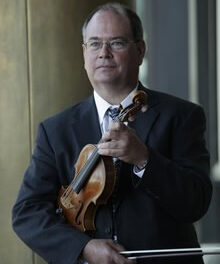In a New Yorker magazine article not long ago, music critic Alex Ross recalled his discovery of the young, Russian-born, German-trained Igor Levit. He loved what he heard when Levit’s CD arrived in the mail. Before describing the young artist’s defining characteristics, Ross complained about some of the recently-emerged pianistic talent that have offered more sizzle than steak.
“There is a surplus of pianists who play with glistening skill and photograph well but who have nothing memorable to say,” Ross wrote. He wasn’t breaking any news there.
In his praise of Levit I don’t recall him addressing at length what seems to be the pianist’s greatest strength – the utter mastery of dynamics in all kinds of music and musical challenges.
In his recital Friday night at Baldwin auditorium as part of Duke Performances, Levit presented a rich and varied program of familiar masterpieces that overwhelmed – if that’s the word – with a display of seemingly infinite shadings between loud and soft. Indeed, it was news to this listener that there is about a dozen gradients between piano and pianissimo!
The first revelation came with his breathtakingly sensitive and probing exploration of Bach’s Partita No. 4. After hearing Levit’s revelatory performance, it seems almost unthinkable that this composition, as well as most of Bach’s keyboard music, were crafted as “practice pieces.”
With the opening overture, in the dotted rhythms of the French style, our attention was drawn immediately to the clean, clear articulation of the inner and outer voices. Also at play were a judicious use of pedal and dynamic variation that would be the hallmark of the evening. Trills and other ornaments possessed a precision that suggested effortlessness.
The following Allemande movement took us to the emotional heart of the piece. Once again, the audience witnessed the kind of tenderness and a commitment to the exquisite subtleties of the score that Bach himself probably never heard. By the time the piece concluded with a fugal Gigue, where virtuosity claimed the high ground, Levit found himself in an enraptured hall. (Talk at intermission seemed to indicate “this is Bach for the ages…”)
But before the break came the six short pieces that compose Schubert’s Moments musicaux. These works place us in a different world – the one between Beethoven and the full flourishing of the Romantic era. Like his impromptus, the musical moments are heartfelt expressions of a spectrum of moods, many of them driven by captivating rhythmic patterns.
Levit’s touch was again light, as would befit a composition written for an instrument that was in Schubert’s time very much a work in progress. But while the dynamics were subdued, they were anything but compressed. Quieter passages sang softly and with ease; the more percussive ones remained persuasive but well short of any clangy overreach. And in this pianist’s hands the popular F minor march (number 3 of the 6) seemed to be the happiest piece ever rooted in a minor key.
Next: Beethoven’s inimitable, middle-period masterpiece, the so-called “Tempest” sonata. This is music of wild, pained, insistent and disturbing passions. It is like no other work in his canon, and its three movements are more interdependent than any other score I can think of.
What would Levit make of this? The powers that produced a definitive Bach – would they be welcome here?
The musicianship that ensued was clearly of a different hue than that which shaped the intimate Bach and soulful Schubert. But artistry it was, beginning (again) with finely shaded dynamics, this time accompanied by constant maintenance of the rhythmic drive that is so essential to successful treatment of the first and last movements.
By being in a major key, the second movement distinguishes itself from the others, but the beguiling sense of mystery dwells here as well. In the middle comes a succession of cascading broken chords that begin in the high treble and course down to the bass. It requires fiendish crossing of the left hand over the right – a real bump in the road for an amateur. Levit’s handling was marked by grace and unerring accuracy.
The final movement, with its passionate intensity, flashes of rage, and rhythmic drive, seems to find Beethoven almost attempting a musical autobiography. (At this time in his life deafness was beginning to overtake him.) Levit approached it almost with caution – everything it the right place, note-perfect and finely shaded. But the tempo was a bit much (fast) and while nothing in accuracy was sacrificed, the speed took something away from the overall clarity and grandeur of this wondrous creation.
Prokofiev’s Sonata No. 7, which concluded the program, is a deeply satisfying if nerve-jangling marriage of the lyrical and the grotesque – in short, typical Prokofiev.
Levit was clearly at ease delivering this alternately raucous, meltingly beautiful music. The middle movement is a monument to contrast, in which the music is at one moment tender and inviting, at others a threat to all living things. Levit coursed through it all, delivering mastery at every turn.
The concluding toccata is one of the great 20th century crowd-pleasers. It’s a blazing, virtuosic crescendo from start to finish, and as it builds in volume and intensity many pianists tend to let bits and pieces fly off into the ether. Levit’s approach was one of clinical precision, so much so that one almost wished for a smudged note or two to prove the composition’s difficulty (and the pianist’s mortality).
The thunderous finale was brilliantly executed and the audience responded as expected – with hoots and wild applause.
They were rewarded with an encore: a winning but almost pathologically whimsical polka by Shostakovich.












